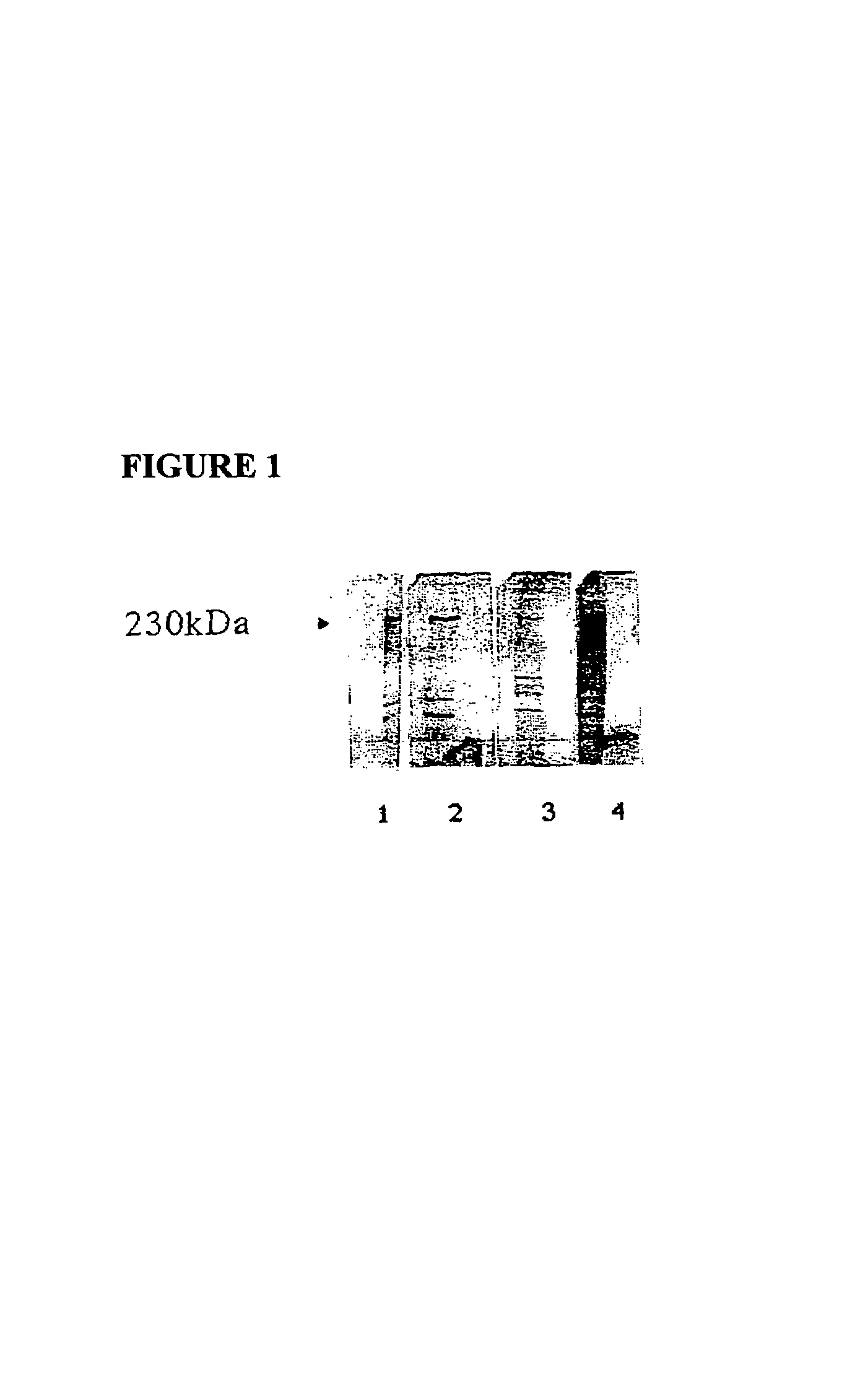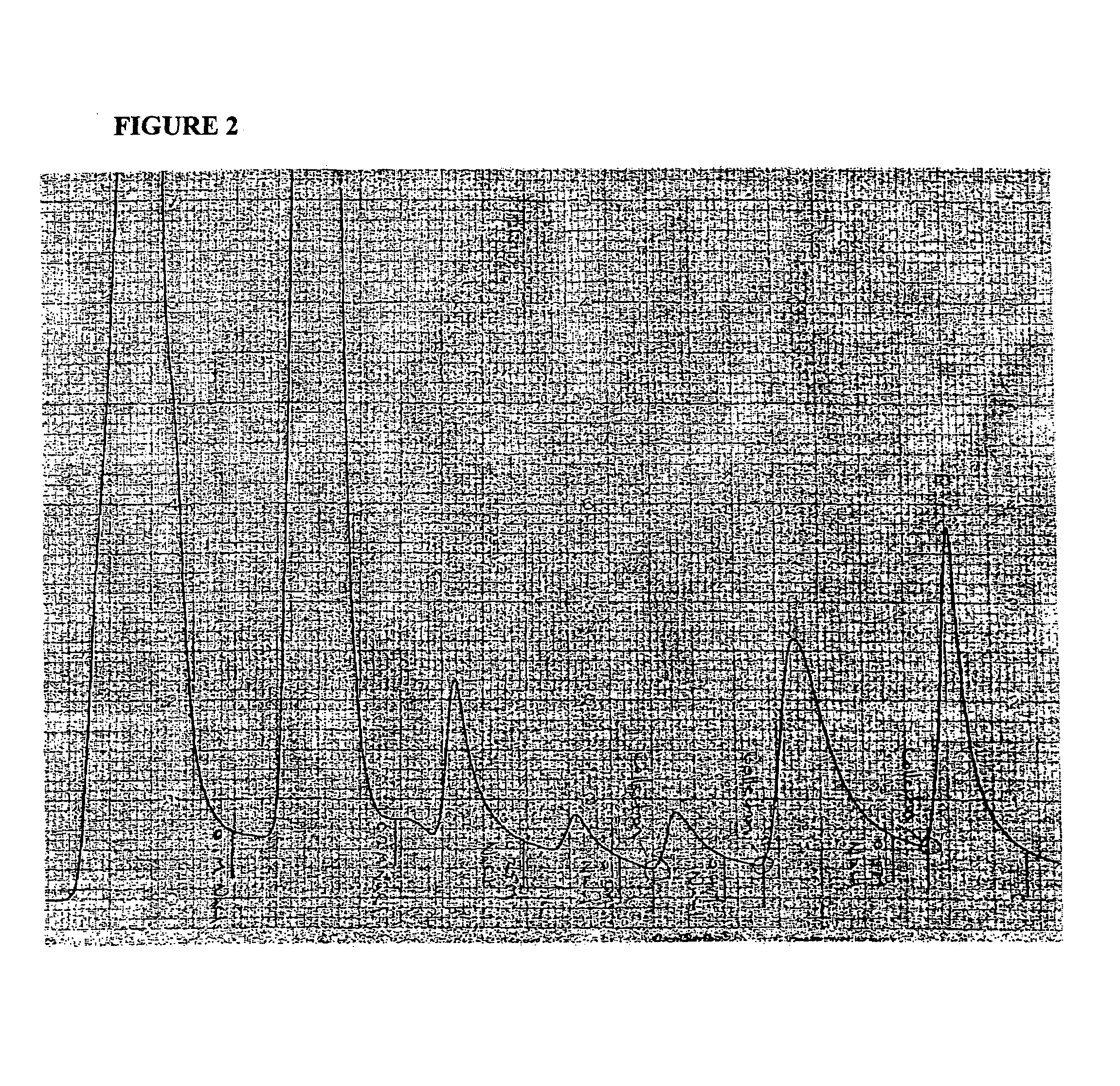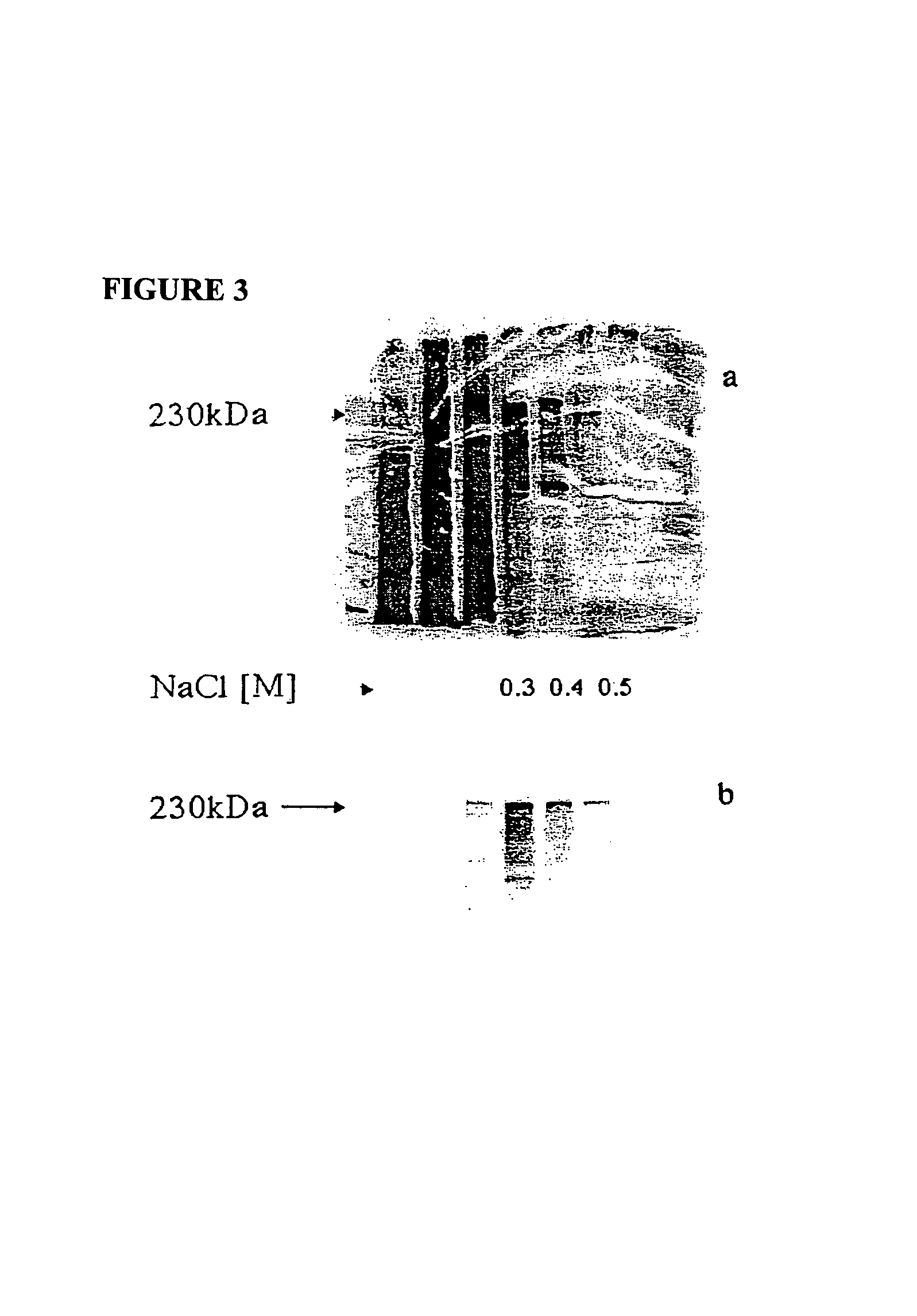Nucleic acids encoding a recombinant 250 kDa antigen from sporozoites/merozoites of Eimeria maxima and their uses
a technology of eimeria maxima and sporozoites, which is applied in the field of nucleic acids encoding a recombinant 250 kda antigen from sporozoites/merozoites of eimeria maxima, can solve the problems of inability to control sanitary conditions, high cost of certain drugs, and the rise of coccidiosis
- Summary
- Abstract
- Description
- Claims
- Application Information
AI Technical Summary
Problems solved by technology
Method used
Image
Examples
example 1
Purification of the 250 kDa Sporozoite Antigen from Sporulated Oocysts
[0264]Sporulated oocysts of E. maxima were prepared as described previously (Wagenbach). 100×106 sporulated oocysts were thoroughly washed and then resuspended in an equal volume of 40 mM Tris.HCl pH 8.0, overlayed with glass beads and ruptured by vortexing for 5 minutes. The homogenate was then subjected to three cycles of freeze-thawing using liquid nitrogen / 40° C. water bath, followed by centrifugation at 13,000×g for 10 minutes. The supernatant was removed, transferred to a microconcentrator (Centricon 100, Amicon) and concentrated by centrifugation at 9900×g for 30 minutes at 4° C. Protein concentration was determined by the Bradford method. A 5 microgram sample of the crude extract was analyzed by SDS-PAGE and Western blotting the results of which are shown in FIG. 1. As can be seen, sera from hens or their offspring chicks immunized by live infection with E. maxima or with a crude merozoite extract reacted ...
example 2
Amino Acid Sequencing of the N-Terminus as Well as Internal Tryptic Peptides from the 250 kDa Antigen
[0267]Ion-exchange purified fractions eluted with 0.3 to 0.5 M NaCl were pooled and the proteins were separated by SDS-PAGE (FIG. 4). Following electrophoresis, the proteins were transferred to a PVDF membrane, which was then stained with Coomassie Blue. The band corresponding to the immunodominant 250 kDa protein was excised and the N-terminus was sequenced. For the sequencing of internal peptides, the 250 kDa protein band was subjected to tryptic digestion and subsequent sequence analysis of the generated peptides by mass spectrometry.
[0268]The results of the sequence analysis were as follows:
[0269]N-terminal: EVNNELSK(C)ESGWTPW (SEQ. ID. NO. 8)
[0270]Tryptic peptide 1 QWTAWTE (SEQ. ID. NO. 9)
[0271]Tryptic peptide 2 EL / IVNWF (SEQ. ID. NO. 10)
example 3
RACE PCR Cloning and Sequencing of the Gene Encoding the 250 kDa Antigen
[0272]Total RNA was extracted from sporulated oocysts using TRIzol Reagent according to the manufacturer's protocol. mRNA was isolated from total RNA using a Dynal mRNA kit according to the manufacturer's instructions. The mRNA was then used for the construction of cDNA using a Marathon RACE kit (Clonetech). Degenerate PCR primers were designed from the N-terminal and tryptic peptide sequences and used in the 5′ and 3′ RACE PCR experiments. Bands generated were cloned and sequenced and the sequence obtained was used to design new gene-specific primers. Gene specific primers were then used together with the degenerate primers to precisely define the 5′ and 3′ ends of the cDNA. Gene specific primers were then designed to amplify the full length 7 kilobase cDNA. The result are shown in FIG. 5 where the 7 KB cDNA band can be visualized.
[0273]The DNA sequence data obtained from the 250 kDa cDNA clone is presented in ...
PUM
| Property | Measurement | Unit |
|---|---|---|
| Atomic weight | aaaaa | aaaaa |
| Atomic weight | aaaaa | aaaaa |
| Atomic weight | aaaaa | aaaaa |
Abstract
Description
Claims
Application Information
 Login to View More
Login to View More - R&D
- Intellectual Property
- Life Sciences
- Materials
- Tech Scout
- Unparalleled Data Quality
- Higher Quality Content
- 60% Fewer Hallucinations
Browse by: Latest US Patents, China's latest patents, Technical Efficacy Thesaurus, Application Domain, Technology Topic, Popular Technical Reports.
© 2025 PatSnap. All rights reserved.Legal|Privacy policy|Modern Slavery Act Transparency Statement|Sitemap|About US| Contact US: help@patsnap.com



